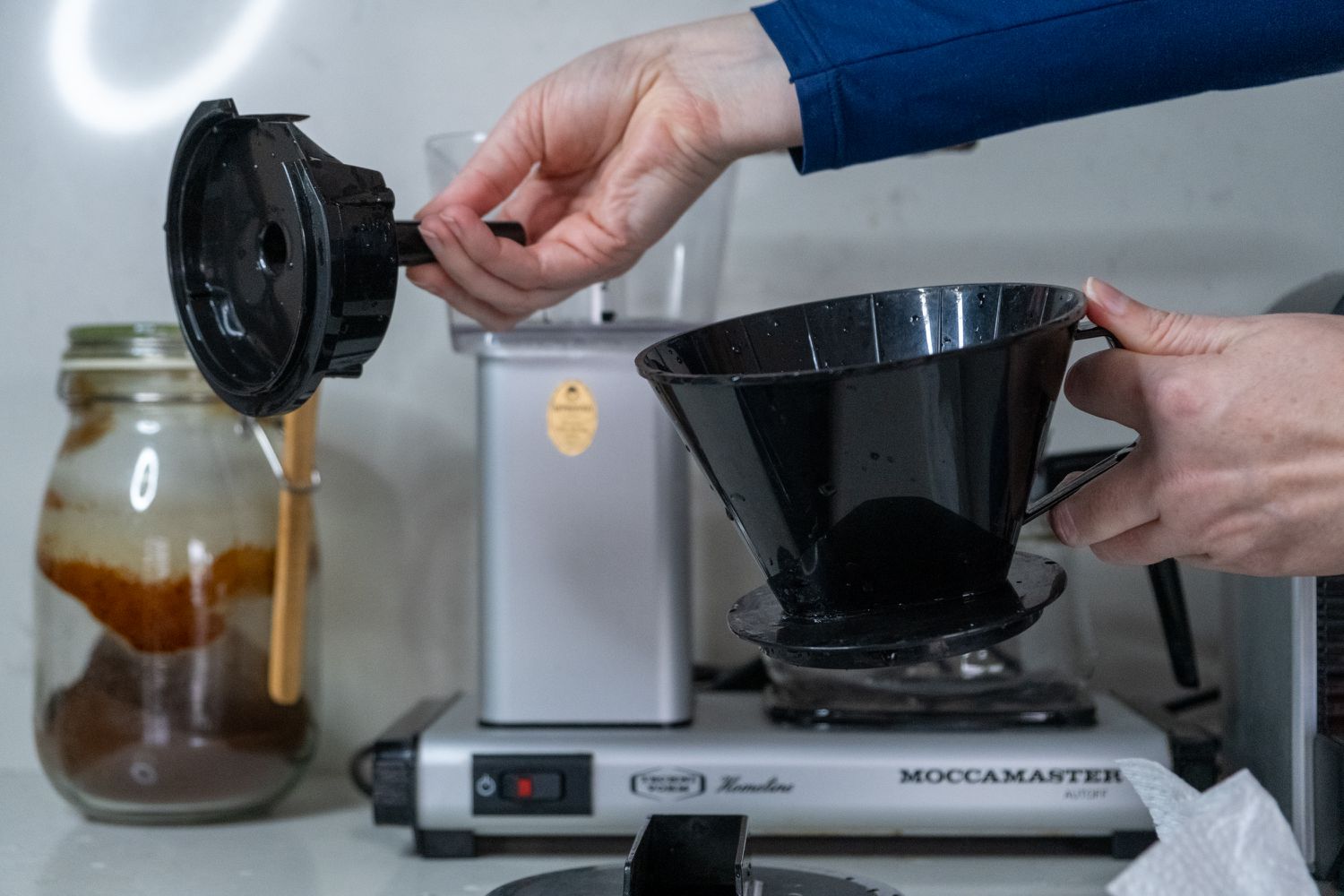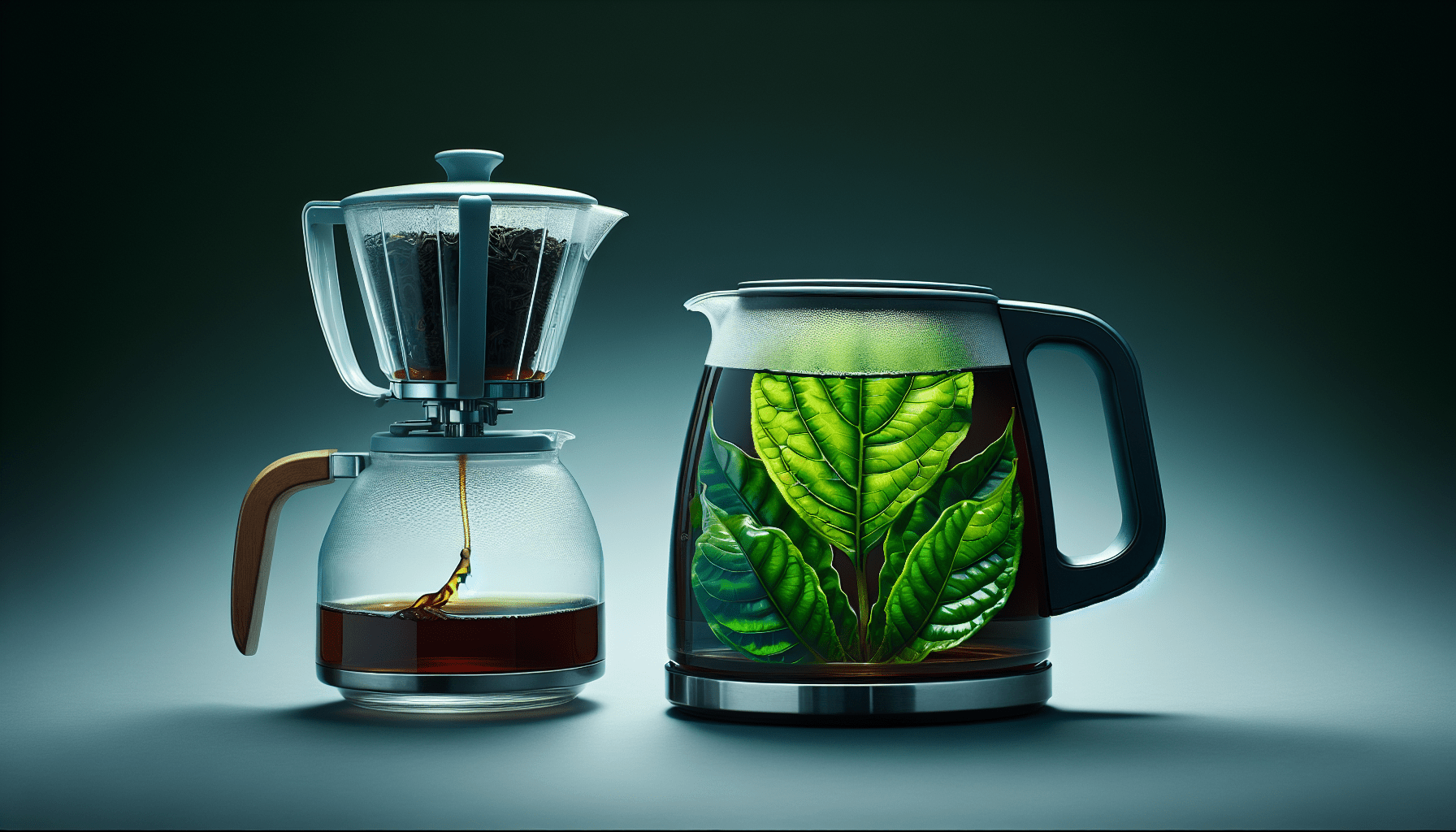If you’re wondering about the effectiveness of using vinegar to clean your coffee maker, you’ll be relieved to know that it is indeed a tried and tested method. Vinegar, with its natural acidity, can effectively remove mineral deposits and residue left behind by coffee oils in your coffee maker. Not only does it help to improve the taste and quality of your brew, but it also helps to prolong the lifespan of your machine. Discover how easy it is to give your coffee maker a much-needed cleanse with a simple and affordable household ingredient.
Understanding the importance of cleaning your coffee maker
Your morning routine is never complete without a fresh cup of coffee. But have you ever stopped to consider the importance of cleaning your coffee maker? Cleaning your coffee maker is often overlooked, but it plays a crucial role in maintaining the quality and taste of your coffee. In this article, we will explore why cleaning your coffee maker is important, what can happen if you neglect cleaning, and how often you should clean your coffee maker.
Why is it important to clean your coffee maker?
Cleaning your coffee maker is important for several reasons. First and foremost, it helps remove any leftover coffee residue and oils that can accumulate over time. This residue can affect the flavor of your coffee, leading to a bitter or off-taste. By regularly cleaning your coffee maker, you ensure that every cup of coffee is brewed at its best and most flavorful.
Secondly, cleaning your coffee maker helps prevent the growth of bacteria and mold. The warm and moist environment inside the coffee maker provides the perfect breeding ground for these unwanted organisms. Regular cleaning with vinegar or other cleaning solutions helps eliminate this risk and ensures that your coffee maker is hygienic and safe to use.
Lastly, cleaning your coffee maker prolongs its lifespan. Over time, mineral deposits can build up in the inner components of the coffee maker, leading to clogs and reduced performance. By regularly cleaning your coffee maker, you prevent mineral buildup and maintain the efficiency and functionality of the machine.
What can happen if you don’t clean your coffee maker?
If you neglect to clean your coffee maker, several issues can arise. One of the most common problems is a decrease in the quality and taste of your coffee. As mentioned earlier, the accumulation of coffee oils and residue can affect the flavor, resulting in a less satisfying cup of coffee. Additionally, the presence of bacteria and mold can pose a health risk if ingested.
Neglecting to clean your coffee maker can also lead to clogs and blockages. Over time, mineral deposits from the water can build up and restrict the flow of water through the machine. This can result in slower brewing times, weaker coffee, or even complete malfunction of the coffee maker.
Lastly, failing to clean your coffee maker regularly can significantly reduce its lifespan. The accumulation of mineral deposits and the growth of bacteria and mold can cause irreversible damage to the internal components of the machine. This can result in costly repairs or the need for a new coffee maker altogether.
How often should you clean your coffee maker?
The frequency of cleaning your coffee maker depends on several factors, including how often you use it and the type of water you use. As a general guideline, it is recommended to clean your coffee maker at least once a month.
If you use your coffee maker daily or if you notice a decrease in the quality of your coffee, you may want to consider cleaning it more frequently. Additionally, if you live in an area with hard water, which contains high levels of minerals, you may need to clean your coffee maker more often.
By cleaning your coffee maker regularly, you ensure a consistently great coffee experience and prolong the life of your beloved machine.
Using vinegar to clean your coffee maker
Why vinegar is a popular choice for cleaning coffee makers
Vinegar is a popular choice for cleaning coffee makers due to its effectiveness and natural properties. It is a versatile and affordable household item that can be found in almost every kitchen pantry. Using vinegar as a cleaning solution for your coffee maker offers several benefits.
Firstly, vinegar is a powerful natural cleaner that helps dissolve mineral deposits and remove stubborn coffee residue. Its acidic properties make it effective in breaking down and removing any buildup inside the coffee maker. Additionally, vinegar is a safe and non-toxic option compared to some commercial cleaning products that may contain harsh chemicals.
Another advantage of using vinegar is its affordability and availability. It is a cost-effective solution that can easily be purchased at any grocery store. You can have peace of mind knowing that you don’t have to spend a fortune on expensive cleaning products to keep your coffee maker in top condition.
How does vinegar work to clean a coffee maker?
Vinegar works by breaking down mineral deposits and dissolving coffee residue. The acidity of vinegar helps to remove these buildups effectively. When the vinegar solution is run through the coffee maker, it breaks down the mineral deposits and coffee oils, resulting in a cleaner and more efficient machine.
The acetic acid in vinegar is a natural disinfectant, killing bacteria and any potential mold growth inside the coffee maker. This ensures that your coffee maker is clean and hygienic, ensuring the safety of your coffee consumption.
What type of vinegar should you use?
When it comes to cleaning your coffee maker, white vinegar is the most commonly used and recommended type of vinegar. White vinegar has a high acetic acid content, making it effective in removing scale and residue.
It is important to note that you should not use balsamic vinegar or flavored vinegar when cleaning your coffee maker. These types of vinegar may leave behind unwanted flavors and residues that can affect the taste of your coffee.
Preparing the vinegar solution for cleaning
To prepare the vinegar solution for cleaning your coffee maker, you will need white vinegar and water. The ideal ratio is one part vinegar to two parts water. This diluted solution is effective in cleaning while minimizing the risk of leaving behind any vinegar taste or odor.
It is essential to follow the manufacturer’s instructions for your specific coffee maker model when preparing the vinegar solution. Some coffee makers may require different ratios or additional steps for optimal cleaning.
Steps to clean your coffee maker with vinegar
Step 1: Empty the coffee maker
Before starting the cleaning process, make sure your coffee maker is empty. Remove any leftover coffee grounds or filters and empty the carafe.
Step 2: Prepare the vinegar solution
Refer to the manufacturer’s instructions for the appropriate ratio of vinegar to water for your coffee maker. Mix the vinegar and water in a measuring cup or any suitable container.
Step 3: Run the vinegar solution through the coffee maker
Pour the vinegar solution into the water reservoir of your coffee maker. Start the brewing cycle, allowing the machine to run through a complete brewing cycle. This will ensure that the vinegar solution reaches and cleans all the internal components of the coffee maker.
Step 4: Run a water cycle
After the vinegar solution has been brewed, empty the carafe and rinse it thoroughly. Fill the water reservoir with fresh water, and run a water cycle without coffee grounds or filters. This will help flush out any remaining vinegar residue from the coffee maker.
Step 5: Clean external parts of the coffee maker
While the internals of your coffee maker are being cleaned, take the opportunity to clean the external parts as well. Wipe down the exterior with a damp cloth and clean any removable parts according to the manufacturer’s instructions.
Alternative methods to clean your coffee maker
Using citric acid instead of vinegar
If you prefer an alternative to vinegar, you can use citric acid to clean your coffee maker. Citric acid works similarly to vinegar in breaking down scale and residue. It is also a natural and non-toxic option. Dissolve two tablespoons of citric acid in a container of water and follow the same steps as cleaning with vinegar.
Using specialized coffee machine cleaners
In addition to vinegar or citric acid, there are specialized coffee machine cleaners available on the market. These cleaners are specifically designed to remove mineral deposits and coffee oils from coffee makers. They often come in the form of powders or tablets that are dissolved in water and run through the coffee maker. Follow the manufacturer’s instructions when using these specialized cleaners.
Tips for maintaining a clean coffee maker
Regularly clean removable parts
Apart from regular deep cleaning, it is essential to clean the removable parts of your coffee maker regularly. This includes the coffee filter, the water reservoir, and the carafe. Wash these parts with warm, soapy water and rinse thoroughly to remove any coffee residue or oils.
Avoid leaving water in the coffee maker for extended periods
After brewing coffee, it is recommended to empty any remaining water from the water reservoir. Leaving water sitting in the coffee maker for extended periods can lead to the growth of bacteria and mold. By emptying the water reservoir promptly, you prevent the risk of these unwanted organisms.
Follow manufacturer’s instructions for cleaning
Different coffee makers may have specific cleaning instructions provided by the manufacturer. It is important to read and follow these instructions to ensure that you are cleaning your coffee maker correctly. Following the manufacturer’s guidelines will optimize the cleaning process and prevent any potential damage to the machine.
Consider using filtered water
Using filtered water in your coffee maker can help minimize mineral buildup and extend the time between cleanings. Impurities in tap water, such as minerals and chlorine, can contribute to scale and residue formation. By using filtered water, you reduce the number of impurities introduced to your coffee maker and subsequently decrease the frequency of cleaning required.
Common issues with coffee makers and vinegar cleaning
Vinegar smell in the coffee
After cleaning your coffee maker with vinegar, you may notice a lingering vinegar smell in your coffee. To eliminate this smell, run several cycles of fresh water through the coffee maker until the vinegar smell is no longer present. Proper rinsing will ensure that your coffee does not have a vinegar taste or odor.
Residual vinegar taste
If you notice a vinegar taste in your coffee even after cleaning, it may be due to insufficient rinsing. Ensure that you thoroughly rinse all components of the coffee maker, including the water reservoir and the carafe, to remove any residual vinegar. Running multiple cycles of fresh water through the coffee maker can help eliminate any lingering taste.
Calcium build-up
Vinegar is effective in removing mineral deposits, but it may not completely eliminate stubborn calcium build-up. If you notice excessive scale or build-up, you may need to consider using a commercial coffee machine descaler. These descaling products are specifically formulated to dissolve calcium deposits and restore the optimal performance of your coffee maker.
Frequently asked questions about using vinegar for coffee maker cleaning
Can I use vinegar to clean a Keurig coffee maker?
Yes, vinegar can be used to clean a Keurig coffee maker. Follow the same steps outlined earlier in this article to clean your Keurig using vinegar. However, it is important to consult the manufacturer’s instructions specific to your Keurig model for any additional steps or considerations.
How do I descale a coffee maker using vinegar?
Descaling a coffee maker using vinegar involves running a vinegar solution through the machine to remove mineral deposits. The steps are outlined in detail earlier in this article. It is important to consult the manufacturer’s instructions for your specific coffee maker to ensure the correct vinegar-to-water ratio and any additional steps.
Can I use apple cider vinegar instead of white vinegar?
While white vinegar is the recommended choice for cleaning coffee makers, apple cider vinegar can be used as an alternative. However, apple cider vinegar may leave behind a slight taste or odor compared to white vinegar. If you choose to use apple cider vinegar, make sure to rinse your coffee maker thoroughly to eliminate any residue or taste.
Can I use vinegar to clean a pod coffee maker?
Yes, you can use vinegar to clean a pod coffee maker. Follow the same steps outlined earlier in this article to clean your pod coffee maker using vinegar. It is essential to consult the manufacturer’s instructions specific to your pod coffee maker for any additional steps or considerations.
Conclusion
Regularly cleaning your coffee maker is essential for a great tasting coffee experience. By understanding the importance of cleaning, you can ensure that each cup you brew is full of flavor and free from any unwanted taste or odor. Vinegar is a popular choice for cleaning coffee makers due to its effective cleaning properties and natural qualities. It is affordable, readily available, and safe to use. By following the steps outlined in this article and incorporating the tips for maintenance, you can keep your coffee maker in optimal condition and enjoy delicious coffee every time you brew.




